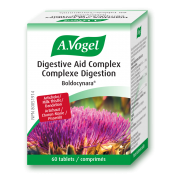What is a bitter?
Chances are, you’ve heard the term ‘bitters’ when someone refers to their bar cart or the latest signature cocktail the new bar down the road created. These agents are used as tonics to stimulate digestion.
What even happens during digestion?
From the moment the smell of a freshly made meal hits our nostrils, the body begins preparing our digestive response. The scents of bread being pulled out of the oven, grilled eggplant or a juicy burger on the barbeque, or a marshmallow held over the fire as a loon calls across the lake are mouthwatering experiences for an important reason. Seeing and smelling a meal at hand kick starts the salivary glands to increase their production. Saliva contains an important enzyme known as amylase that breaks down larger sugars into those that are more easily processed.
Knowing something is in the mouth worth digesting, the body also starts to increase the amount of acid produced in the stomach. This acid breaks apart the meal into smaller and smaller bits to increase the surface area that the enzymes in the gut can act on. The stomach also contains pepsin, an agent that breaks down proteins so they can be absorbed further down the digestive line.
Over the stomach, and through the gut.
After passing through the stomach, the mixture of enzymes, stomach acid and food is now known as chyme. Upon entering the small intestine, the gall bladder and pancreas begin their work. The gall bladder releases bile salts that act on fats to break them down into smaller droplets, a process known as emulsification. The pancreas releases amylase similar to that found in the mouth in addition to protease and lipase which act on proteins and fats respectively. A hormone known as cholecystokinin is active is this phase of digestion, the role of which is to increase bile and pancreatic enzyme release.
All of this breaking down over the course of digestion is so the nutrients can be absorbed in the small intestine.
How does a bitter help me achieve improved digestion?
The first function of bitters is as a sialogogue, something that increases the production of saliva. As we know, this helps increase the levels of amylase at the level of the mouth. Second, they function as a stomachic to promote appetite through the release of the hormone gastrin – the compound that stimulates the release of stomach acid. They serve as a cholagogue which stimulates the release of bile from the gall bladder.
If I’m out shopping for groceries, how do I find a bitter?
Unfortunately, these foods are sorely underrepresented in our shopping carts. With 20.2% of Canadians classified as obese in 2014, it may come as no surprise that more individuals are trending away from bitter tasting foods for something of the sweeter variety. This had led to digestive weakness across the nation with more than 20 million Canadians suffering from digestive disorders such as Crohn’s disease, Celiac disease, or GERD each year! Adding bitters to the grocery list is a sure way to heal your digestive system and contribute to overall wellness.
Grocery List
- Ginger has been cultivated for its therapeutic benefits for centuries, having been described in Chinese treaties dating back to 400 BC to treat nausea, indigestion, and fever. The spice contains the active components gingerol and shogaols which act to increase gastric contractions and emptying, as well as provide anti-inflammatory properties which could benefit those suffering from inflammatory bowel disease.
- Artichoke. There’s nothing like meeting a friend for lunch only to spot hot artichoke dip on the appetizer menu. Artichoke (Cynara cardunculus) contains sesquiterpene lactones that have significant effects on digestion. In one study, 80% of patients experienced a reduction or elimination of abdominal pain, bloating, flatulence, or constipation in only four weeks!
- Dandelion. Both the roots and leaves of Taraxacum officinale have been used to provide relief to those experiencing spleen or liver complaints, heartburn, or dyspepsia. The liver plays a huge role in digestion, detoxifying incoming nutrients and digestive byproducts, and while the gall bladder releases bile, the liver produces it. Dandelion is a bitter that protects against liver toxicity and damage.
- Milk Thistle. The powerful herb Silybum marianum has wide ranging digestive effects due to the active phytochemical silymarin. Many autoimmune and liver conditions have been linked to an inflammatory gene known as CXCL10. Silymarin has been shown to suppress this gene and therefore helps to mitigate a state of pro-inflammation. Activation of another enzyme known as Jun N-terminal kinases (JNKs) induces cell death.
That isn’t an average grocery list!
You’re right – but luckily all of these are found as one nice tablet called Digestive Aid Complex. These tablets taken before or after a meal contain artichoke, milk thistle, dandelion, and boldo leaf (Peumus boldus). Boldo, a plant native to central Chile, mostly acts on the gall bladder to stimulate the release of bile but also protects the liver from oxidative damage. Always talk to your primary care provider before adding a new health product into your routine as the action of the herbs should be avoided if you have gastrointestinal issues.
References
https://www.europeanreview.org/wp/wp-content/uploads/1291-1296.pdf
https://www.ncbi.nlm.nih.gov/pubmed/16246215
https://www.ncbi.nlm.nih.gov/pubmed/19145575
https://www.ncbi.nlm.nih.gov/pubmed/22010973
https://www.ncbi.nlm.nih.gov/pubmed/22946853
https://www.ncbi.nlm.nih.gov/pubmed/24642205
https://www.ncbi.nlm.nih.gov/pubmed/25015447
https://www.ncbi.nlm.nih.gov/pubmed/25603021
https://www.ncbi.nlm.nih.gov/pubmed/25912592
https://www.ncbi.nlm.nih.gov/pubmed/26186142
https://www.ncbi.nlm.nih.gov/pubmed/27043523
https://www.ncbi.nlm.nih.gov/pubmed/27640169
https://www150.statcan.gc.ca/n1/pub/82-625-x/2015001/article/14185-eng.htm





